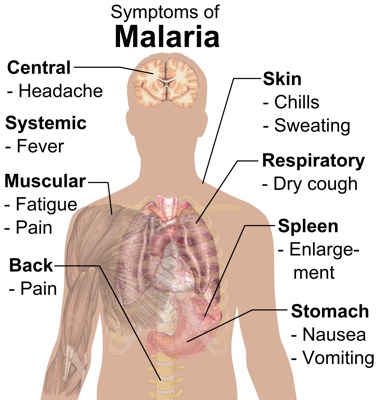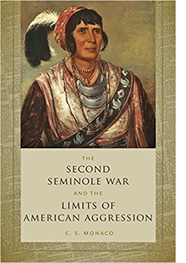An Overlooked Aspect of War Is the Toll Illness Often Takes on Soldiers

Case in Point: How malaria affected the troops in the Second Seminole War, turning some soldiers mad.
Disease, malnutrition, mental trauma and other facets of ill-health have always beleaguered armies and have accounted for far more deaths than battlefield casualties. Few wars better exemplify this state of affairs than the Second Seminole War (1835-1842), a major conflict that once devastated the Florida peninsula. Recent findings suggest that mental trauma played a far more prominent role than previously thought and that malaria—a disease that is no longer endemic in Florida—greatly exacerbated matters as a certain lethal malarial strain (Plasmodium falciparum) also caused neurological impairment.
 Because
the etiology of malaria remained a mystery to army physicians,
including its mosquito-borne transmission, the disease continued to
exact a heavy toll. Aside from mortality, malaria can cause
delirium, depression, cognitive deficits as well as lethargy. It
remained an insidious problem as these symptoms countered cultural
expectations of unwavering strength and heroism under fire. Some men
dealt with the various strains of malaria, including less lethal
forms such as Plasmodium
vivax,
simply by staying intoxicated. During the Battle of Micanopy (June 9,
1836), for example, a lieutenant observed a drunken enlisted man
pointlessly “marching up and down in bravado until some redskin put
a bullet in him,” although the soldier escaped serious wounds.
Other men,
however, were susceptible to severe mental breakdowns and needed to
be physically restrained. A young soldier, for example, became so
gripped with fear during a Seminole attack at Fort Drane, especially
when the jarring sound of war whoops was at its highest, that “he
became quite a maniac.” He died soon after being tied down to the
hospital floor. The staff assigned this case as “death from
fright,” although another more plausible explanation would be P.
falciparum.
The army’s own treatment regimen, which included mercury-laden
medicines and painful blisters to the head, almost certainly hastened
this person’s demise.
Because
the etiology of malaria remained a mystery to army physicians,
including its mosquito-borne transmission, the disease continued to
exact a heavy toll. Aside from mortality, malaria can cause
delirium, depression, cognitive deficits as well as lethargy. It
remained an insidious problem as these symptoms countered cultural
expectations of unwavering strength and heroism under fire. Some men
dealt with the various strains of malaria, including less lethal
forms such as Plasmodium
vivax,
simply by staying intoxicated. During the Battle of Micanopy (June 9,
1836), for example, a lieutenant observed a drunken enlisted man
pointlessly “marching up and down in bravado until some redskin put
a bullet in him,” although the soldier escaped serious wounds.
Other men,
however, were susceptible to severe mental breakdowns and needed to
be physically restrained. A young soldier, for example, became so
gripped with fear during a Seminole attack at Fort Drane, especially
when the jarring sound of war whoops was at its highest, that “he
became quite a maniac.” He died soon after being tied down to the
hospital floor. The staff assigned this case as “death from
fright,” although another more plausible explanation would be P.
falciparum.
The army’s own treatment regimen, which included mercury-laden
medicines and painful blisters to the head, almost certainly hastened
this person’s demise.
Some may have appeared less outwardly affected but were depressed nevertheless. During the same period, Colonel John F. Lane, an officer still in his twenties who complained of “great distress in his head,” suddenly placed the hilt of his sword on the ground while he was alone in his tent and calmly ran the point through the corner of his eye into the brain, killing him instantly. Since Lane was considered one of the army’s rising young stars, news of his death traveled widely. A surgeon who was attached to Lane’s regiment remarked that he had acted strangely for several days and that he was in an agitated state. His fellow officers assigned the cause of death to “a fit of insanity produced by brain fever”; any taint of moral failing was therefore diminished.

Battle of Micanopy by Jackson Walker. Courtesy the Micanopy Historical Society.
In addition to Lane’s passing, Lieutenant Thompson Wheelock, another West Point graduate who had gained a gallant reputation that summer, also committed suicide. Soon after returning to his quarters at Fort Defiance (Micanopy), Wheelock used a pistol to fatally shoot himself through the mouth. Like Lane, Wheelock also exhibited peculiar behavior and, in addition to fever, he began talking incoherently before his final act. Given the symptoms described, as well as the fact that both incidents occurred during a raging malaria epidemic, one can easily surmise that neurological complications from malaria were almost certainly a major factor in both cases and that combat stress exacerbated the situation.
Individuals who happened to survive their initial bout with this disease frequently discovered that their mental and physical abilities had been drastically reduced – a circumstance that understandably could lead to depression. This may have been the case with Captain William S. Maitland, who, “in a fit of derangement,” as the newspapers reported it, threw himself from the stern of a boat and drowned while arriving on medical leave at Charleston Harbor. Maitland had survived several major battles and had begun to recover from his wounds but ironically ended his life just when his much sought-after leave was underway. Far more common than suicide, however, were numerous furlough requests from officers who suffered repeated malarial infections, desired nothing more than to depart Florida, and relished their time away from the territory.
Troubled individuals who nonetheless remained quiet and non-disruptive were likely to be assigned to non-combat duty. A diagnosis of mania (or “raving madness”) was the only mental disqualification recognized by the army, but as yet no records have surfaced that could account for the number determined to be afflicted. More common are personal accounts of men who succeeded in overcoming severe trauma, but nevertheless remained depressed. After enduring five months of illness, one officer admitted that not only was he “a wreck in mind and body” but that his future aspirations were greatly reduced – a state of mind exacerbated by his “conscientious scruples” and deep moral questioning of the war itself. Those who survived their term of duty and returned home were left to their own devices. Many exhibited “shattered constitutions” and embittered feelings and, as a congressman noted, “retired from the gaze of him whose diadem they had saved.” The mind could easily shift into a dissociative state during battle but such conditions could also linger long afterward.
Similar to what later occurred during Vietnam, veterans did not always receive the requisite hero’s welcome and ritual celebration – a situation likely exacerbated by anti-war rhetoric. As the Florida war coincided with the emergence of mass-circulation newspapers, ethically-based arguments that placed Native people as innocent victims of Andrew Jackson’s expansionist policies struck a chord with an increasingly literate public. The noble savage motif then employed by popular authors served as a model for Whig journalists and resulted, among other things, in an almost cult-like celebration of the Seminole war leader Osceola, thus deepening any preexisting disillusionment.
Despite a dearth of official records related to psychological trauma in Florida, one can extrapolate based on a high incidence of desertions among enlisted men, an unprecedented number of officer resignations, the rampant problem of alcoholic excess, reports of self-inflicted injuries, attempted suicide and other observations by contemporary diarists and conclude that most soldiers were, at the very least, deeply unhappy with their lot. “Depressed morale” was indeed recognized as a leading symptom during the war by the office of the surgeon general.